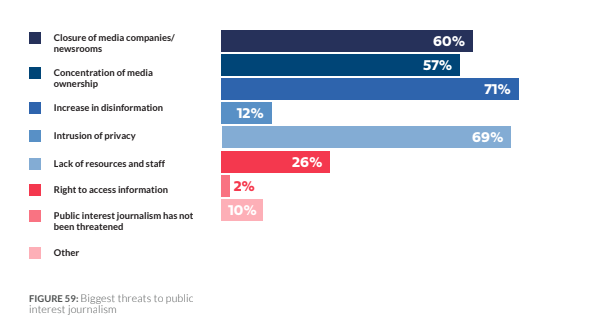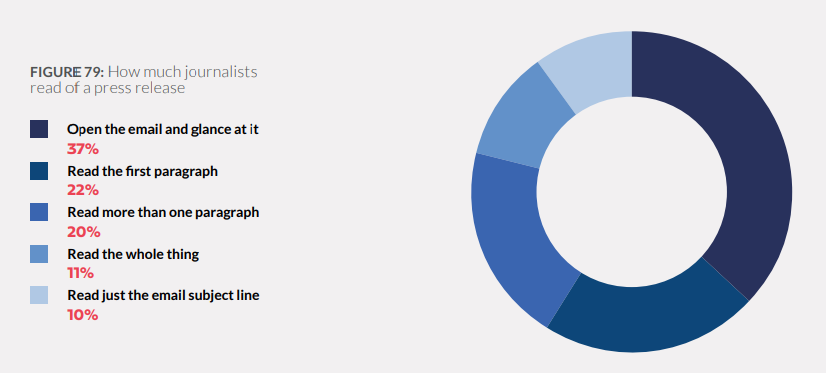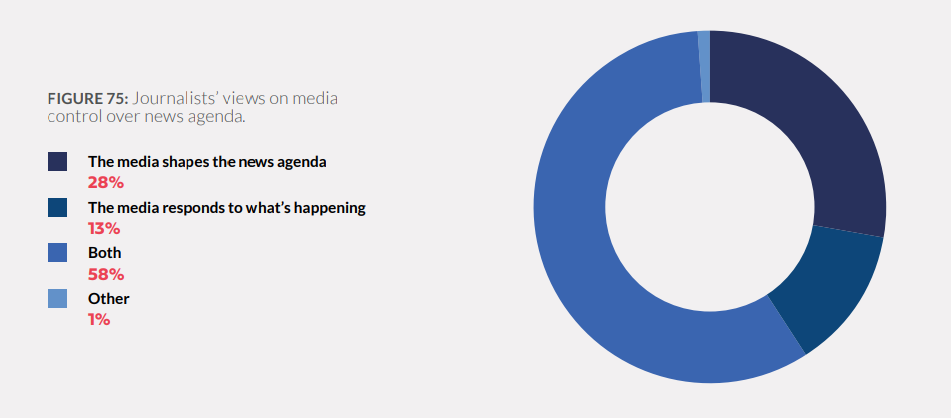How to pitch stories into an industry increasingly under pressure
The Media Landscape Report launched this week highlights an increasingly changing and also challenging environment for media professionals.
The survey reveals that the fear of defamation lawsuits is a major issue faced by journalists, with almost half of respondents (49%) admitting to withholding information they knew to be true.
The survey has also revealed that almost every respondent (98%) felt that public interest journalism in Australia had been threatened in 2022, whether due to defamation laws, disinformation, or lack of resources and staff, among other factors.

On the PR side, we found that PR respondents tend to earn more than journalists, with almost half of PR professionals (47%) earning over $100,000 per year compared to a quarter of journalists (25%). It is maybe no surprise to then also find that more than a third (35%) of PR professionals had also previously worked as journalists before changing professions due to factors such as better lifestyle and pay.
So how do these challenges affect communication professionals? With journalists having less resources or time to hunt for stories in addition for the need for more scrutiny into the quality of those stories, there are learnings for the PR side of the communication spectrum.
Good news, bad news - does it matter?
In a poll recently conducted on LinkedIn we asked what makes news, good new or bad news? Majority of respondents said “bad news” but the answers provided for the report indicate that for both journalists and PR professionals, “it depends”.
The comments from many survey respondents indicated that what really matters is not whether the story is positive or negative. What matters is the hook and its news values: Proximity, Timeliness, Impact, Prominence, Conflict, Oddity and Relevance are the seven news values that will decide if a story is worth publishing.
The press release format
Press releases are used by 86% of journalists to source stories. It’s the second most used source right behind industry leaders at 96%. But how much is actually read when considering writing a story?
10% of journalists said they only read the subject line.
24% of journalists said they only read the first paragraph.
11% of journalists said that they read the whole thing.
All up that means 70% journalists do not read your whole release, most read just the headline or the first paragraph.

So when you structure your press release, go back to basics and answer the 5Ws: Who, What, When and Where, right at the top of the release for those who just want to know in a few seconds if the story is relevant to them and their audience.
Diversify your channels but don’t lose track of the goal
The survey uncovers trends into the use of social media. From last year we knew most journalists are sourcing stories and using social media for their media work. This year we learn that despite Facebook still being on top, LinkedIn is increasingly being used by journalists. We also know that other channels such as Twitter seem to be stagnating and platforms such as Reddit and TikTok are quickly making their way up with a 5% increase since 2021 in the use of Reddit and a 10% increase in the same period in the use of TikTok.
Email is still the most used form to communicate with journalists by PR professionals but there seems to be a gap between where journalists seek stories and where PR pitches them. The most used social media platform for PR professionals is LinkedIn while the most used by journalists is Facebook.
Press releases are very much important, but email is definitely not the only way to pitch them. Consider adapting your release to a social media friendly format and leverage other channels. With solutions such as Ad Driven Distribution, your press release is transformed into a graphic designed following best practice specifications so that it is more likely to be consumed on Instagram, LinkedIn and Facebook.
Despite of all the changes some things remain the same, and they are key
Relationships are the bread and butter of good PR. Gladly that has not changed. What has changed is how we build those relationships because of those time and resource constraints faced by both the journalist and the PR side and the changes in how we behave and where we consume information.
To build relationships you need to stay on top of what matters to journalists. Knowing their interests, their pet-peeves is just as important as knowing their mobile number and email.
This is one of the critical challenges faced by PR professionals. In fact, most of them (53%) identified finding the right person to pitch to as the hardest thing to do. And with 45% of journalists changing roles within a year, it can be hard to keep up with the changes, which brings me to my next point.
Invest in a professional media database or a full-time research resource
So how can PR professionals not only keep up with the changes but also understand who is the best person to contact with a story? The answer is prioritising the updates of media contacts that usually cover stories like yours or are interested in the subjects you normally focus on. Whether it’s in-house or via a high quality media contacts database, make sure you know their preferred contact methods, the latest stories they have written, their pet-peeves. You should also be able to keep track of pitches sent to them in the past to keep that relationship going.
It can take between 15 and 30 minutes to research and update one contact. It’s no doubt a time-consuming process but a worthwhile one.
The news agenda: a symbiotic relationship
We asked both journalists and PR professionals “Who controls the news agenda?” Again, neither side got the majority. Journalists and PR professionals seem to agree that “both” sides influence the news agenda. It’s a symbiotic relationship that benefits from collaborative work between those telling the stories and those having a story to tell.

It is good news that for 60% of PR professionals the relationship with journalists is often positive. But a 40% of PR professionals not having a positive relationship with journalists is still a high number of communication professionals struggling to connect and get their stories out to the media. Focusing on making things easy for journalists can benefit both sides of the media spectrum.



